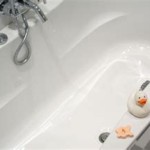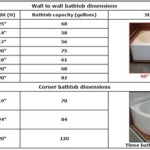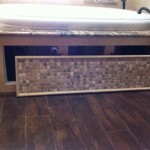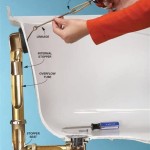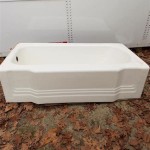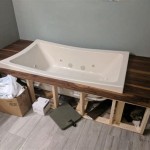Essential Aspects of Replacement Bathtub Drain
Replacing a bathtub drain is a common plumbing task that can be accomplished with a few simple tools and materials. However, it's important to understand the essential aspects of this project before you begin.
Determining the Type of Drain
The first step is to determine the type of drain you have. There are three main types of bathtub drains: pop-up drains, toe-touch drains, and lever drains. Pop-up drains are opened and closed by pressing on a stopper, while toe-touch drains are opened and closed by pressing on a pedal with your foot. Lever drains are opened and closed by turning a lever.
Gathering Materials
Once you know the type of drain you have, you can gather the materials you need. These materials include a new drain assembly, a drain wrench, a putty knife, and a flashlight.
Steps to Replace a Bathtub Drain
1. Turn off the water supply to the bathtub.
2. Remove the old drain assembly.
3. Clean the drain hole.
4. Apply a bead of plumber's putty around the base of the new drain assembly.
5. Insert the new drain assembly into the drain hole.
6. Tighten the drain assembly using the drain wrench.
7. Turn on the water supply to the bathtub and check for leaks.
Tips
Here are a few tips to help you replace a bathtub drain successfully:
• Use a flashlight to inspect the drain hole for any debris or damage.
• Apply a generous amount of plumber's putty to the base of the new drain assembly.
• Tighten the drain assembly securely, but do not overtighten it.
• If you are not comfortable replacing a bathtub drain yourself, you can call a plumber for assistance.

How To Replace A Bathtub Drain

How To Replace A Bathtub Drain

How To Replace A Bathtub Drain

Diy How To Replace Bathtub Drain Stopper Tutorial Clogged

How To Replace A Tub Drain Ask This Old House

How To Replace Bathtub Drain Stopper With A Lift And Turn Diy

How To Remove 6 Diffe Bath Drain Types

Danco Lift And Turn Tub Drain Stopper In Chrome 88599 The Home Depot

How Much Does It Cost To Replace A Bathtub Drain Homeserve Usa

Bathtub Drains And Drain Parts By Watco

